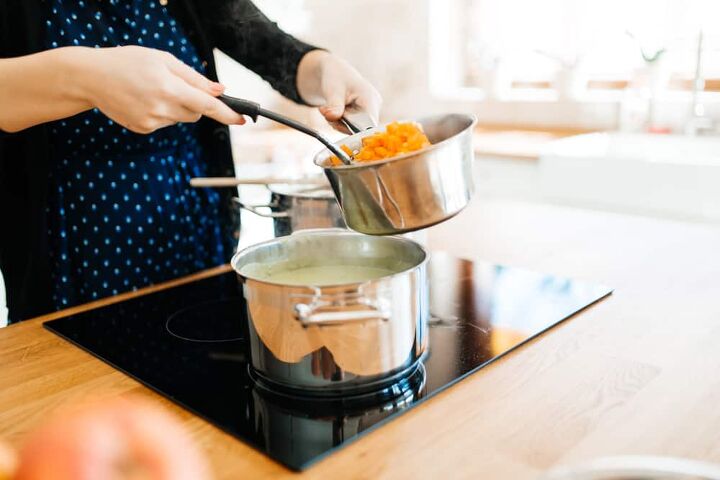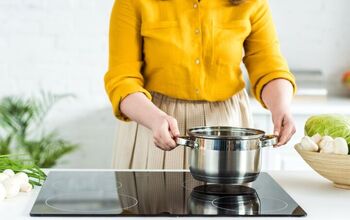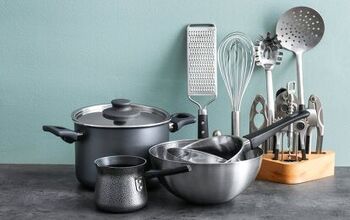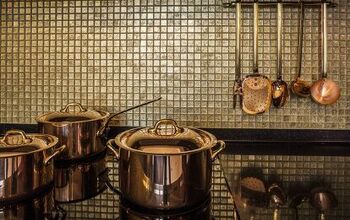How To Use Non-Induction Cookware On An Induction Cooktop

Did you recently start using an induction cooktop? If you have, then you might have noticed something odd. More specifically, you may have observed that only some of your pots and pans seemingly work with your new cooktop.
There’s a good chance that your observations are indeed correct. Not all pots and pans are meant to be used on an induction cooktop, or at least not directly anyway.
If you want to use non-induction cookware on your induction cooktop, you will need the help of additional items. Converter disks and steel wire mesh are the items often used to make non-induction cookware compatible with induction cooktops. Issues may still arise if you use either the disk or wire mesh, but they will allow you to cook.
Induction cooktops only work with certain materials, but there are ways to get around that specific restriction. See how you can get more uses out of your induction cooktop by reading on.
Do You Need Appliance Installation or Replacement?
Get free, zero-commitment quotes from pro contractors near you.

Understanding Your Induction Cooktop
You may be wondering why some pots and pans don’t work well with induction cooktops. That’s a fair question to ask. It all boils down to how the induction cooktops produce heat.
Induction cookers rely on electromagnetism to work as intended. Once they’re turned on, electricity will course through the coil in the induction cooktop. Eventually, a magnetic field will also form on top of the cooking surface.
That magnetic field is responsible for allowing the electricity to pass all the way through to the cookware. However, that won’t happen if the piece of cookware being used is not magnetic. You will need something magnetic to take advantage of the energy being provided by the cooktop. Because of that, certain pots and pans will simply not work properly if placed directly on top of the induction cooker.
How to Determine if Your Cookware Is Compatible with an Induction Cooktop
Certain qualities will determine if your cookware can be used on your induction cooktop. Let’s discuss them in greater detail in this section.
Magnetic Body
Any piece of cookware that will be used directly on an induction cooker has to be magnetic. Without that magnetic quality, there simply won’t be enough heat affecting the pot or pan to cook anything. Even if you keep the induction cooker going for a long time, the food inside may not become edible.
Use a magnet to check if your cookware can be positioned directly on the induction cooker. Target the base of the pot or pan and see if the magnet sticks. Pieces of cast iron and stainless steel cookware should work just fine on induction cooktops. Unfortunately, the same does not hold true for aluminum and copper pots and pans.
Flat Base
You should take a close look at the base of the pot or pan you want to use. What you’re looking for here is a base that is completely flat. The flat base is important for a couple of reasons.
First off, the flat base matters because it allows for the even distribution of heat. If the item you’re using has a circular base, that means the heat will be concentrated on a small area. You’ll have to be extra careful while cooking because some items may burn while others may end up undercooked.
A pot or pan with a flat base may still present some problems if it has bumps or scratches. Those flaws present along the base of the cooking vessel will also prevent even cooking. It can be tough to account for that uneven heat while you’re focusing on following a recipe.
The lack of a flat base does not necessarily disqualify a pot or pan from being used on an induction cooktop. Still, using that kind of cookware on an induction cooker will make things significantly harder for you.
Making Non-Induction Cookware Compatible with Your Induction Cooktop
Is it impossible to use non-induction cookware on an induction cooker? No, that’s not the case, but you will need to use other items to make things work. Let’s discuss what those items are below.
Steel Wire Mesh
The first item you can use to create a connection between your induction cooker and the non-induction cookware is steel wire mesh. You’ve probably seen steel wire mesh used before as a window screen or as a kind of fencing. It’s pretty easy to find too as most hardware stores carry it.
To use the mesh, you first have to place a sheet of it over the cooktop. Make sure the cooktop is turned off by the way. Mark how big the cooking surface is. After that, use a wire cutter to snip out a portion of the mesh that’s twice as big as the cooktop. Fold that in half and place it over the cooking surface.
You can now place your non-magnetic pot or pan over the mesh and turn the cooktop on. The mesh will serve as a conductor and allow the heat to reach the piece of cookware you’re using.
Be warned though that the steel wire mesh can get really hot. It can burn your hand if you touch it accidentally. It’s a good idea to wear thick gloves at all times while cooking if you’re going to use the wire mesh.
Converter Disk
Something else you can use to bridge the gap between your induction cooktop and non-induction cookware is the converter disk. The converter disk is a flat item that almost looks like a very thin pan. It’s usually made out of iron or steel and it’s supposed to span the surface of the cooktop.
The converter disk allows that connection to form between the cooker and the cookware. Converter disks are designed specifically for this purpose and they even come with handles that make them easier to use.
Converter disks still have limitations though. The main drawback to them is that they cannot compensate for a pot or pan without a completely flat base. You can get around that issue by using some thermal paste. The thermal paste fills in the gaps between the disk and the cookware. It allows for better distribution of heat and even cooking.
To use the thermal paste, you need to apply it directly to the bottom of the cookware. Gently place the pot or pan over the disk and let the paste spread. Keep in mind though that the thermal paste will not last that long. It breaks down when exposed to high heat consistently. If you’re planning to cook a dish that requires a lot of time, you shouldn’t rely on thermal paste.
One more thing to note about using a converter disk is that it slows down cooking time. The cooking time for certain dishes may double if you have to use a converter disk. You need to know that before cooking so you don’t end up waiting too long for your meal.
Do You Need Appliance Installation or Replacement?
Get free, zero-commitment quotes from pro contractors near you.

Related Questions
Will Induction Cookware always Work on Induction Cooktops?
There is no guarantee that your cast iron and stainless steel cookware will always be compatible with your induction cooktop. Some factors may affect how compatible they are.For instance, the cookware you’re using may not be the right size for your cooktop. Pots and pans that are too small may not activate the induction cooktop properly. You may not get enough heat if that happens. Pieces of cookware that are too big for the induction cooktop are no good either. They can still allow you to cook, but the heat distribution will be uneven.The quality of the cookware will also determine if it will remain compatible with the induction cooktop. Some pots and pans are equipped with bases that deform quickly. If the base gets deformed significantly, it may not work with the cooktop anymore.
How Long Can You Expect Your Induction Cooktop to Last?
Most commercially sold induction cooktops are expected to provide 2500 to 3000 hours of optimum performance. It’s important to note that the cooktop won’t suddenly stop working after its odometer rolls over to 2500 or 3000 hours.Instead, what you may notice is the cooktop’s performance declining after reaching those aforementioned milestones. It will likely remain usable even after hitting those marks, although you should prepare to replace it sooner rather than later.

Gary Evans is passionate about home improvement. He loves finding out how to make improvements in the easiest, most practical, and most affordable ways. Upgrading his home kitchen is one of his ongoing hobbies. Gary is also a long-time content creator and enjoys spending his free time tending to his hydroponic vegetable garden.
More by Gary Evans



























